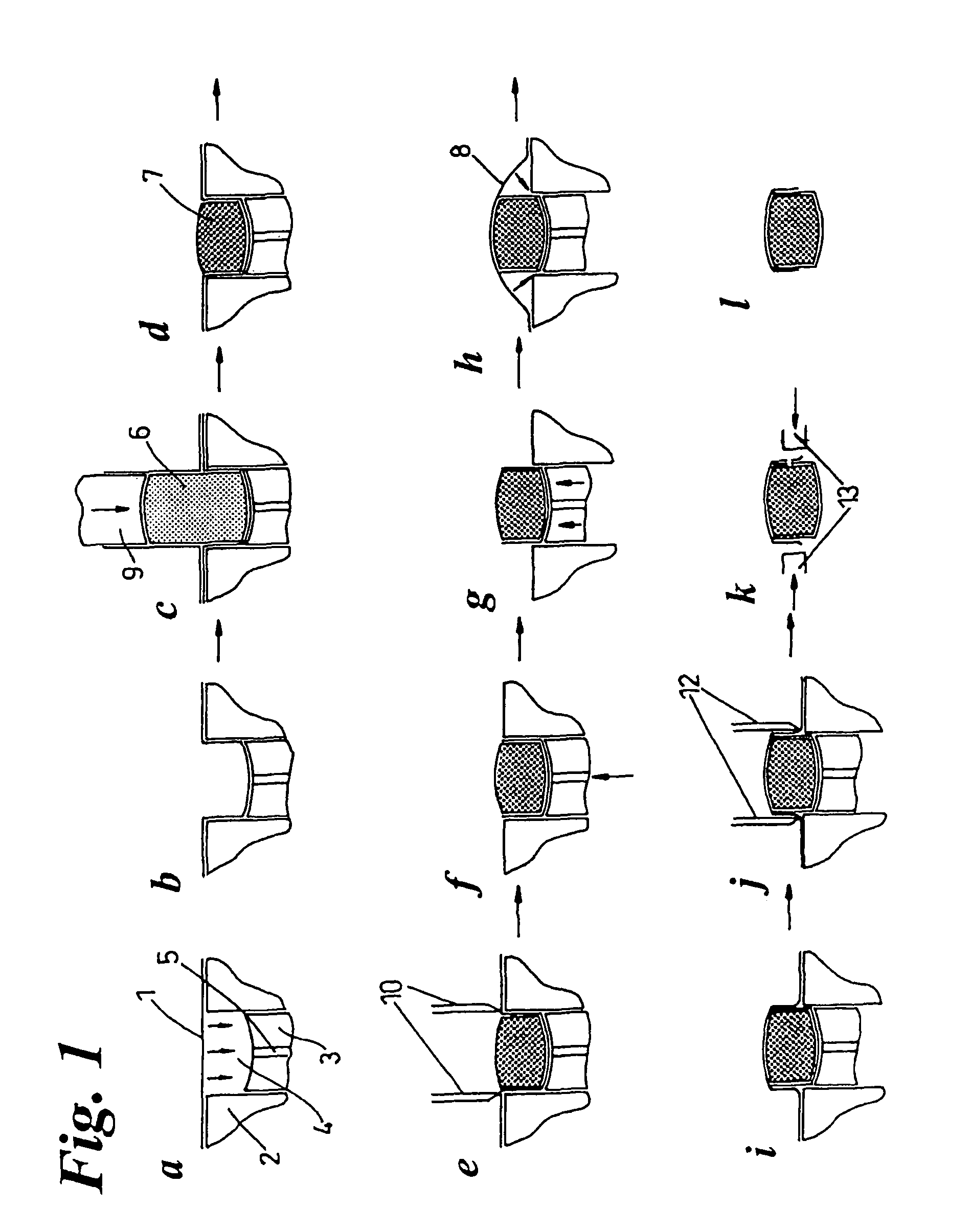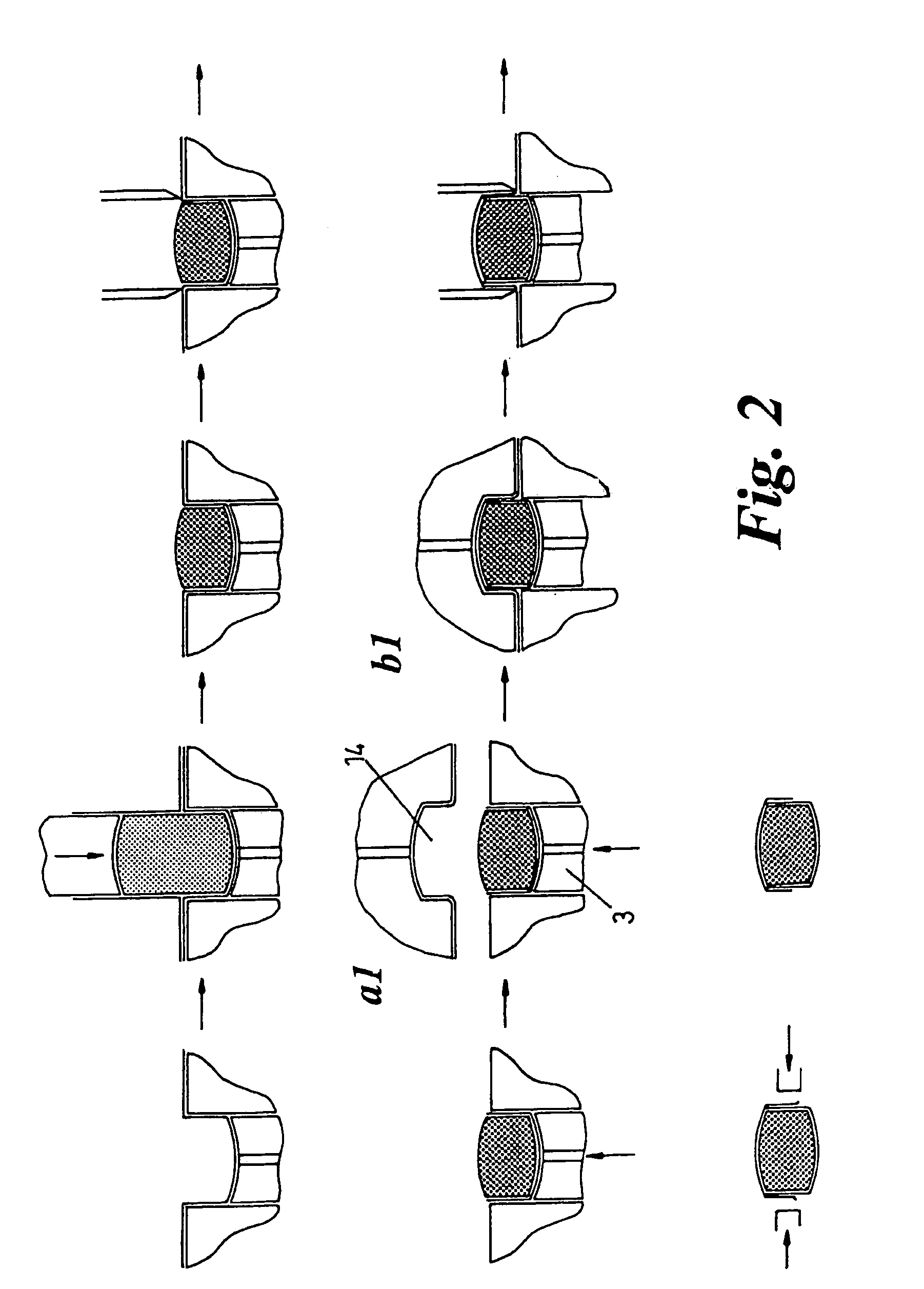Powder compaction and enrobing
a technology of powder and compaction, which is applied in the field of powder compaction, can solve the problems of adverse effects on the disintegration and dissolution rate of active ingredients contained within the capsule, the method of coating tablets is however very time-consuming, and requires a high level of expertise to produce satisfactory results, etc., and achieves a favorable state of compaction and favourable properties. , the effect of easy swallowing
- Summary
- Abstract
- Description
- Claims
- Application Information
AI Technical Summary
Benefits of technology
Problems solved by technology
Method used
Image
Examples
example 2
[0066]Same conditions as Example 1, but the following step replaces ‘Powder dosing and film 1 cutting’ stage:
Powder Dosing and Film 1 Cutting
[0067]A dosing assembly is then placed over the film formed pocket. This consists of a location mask which sits on location dowels in the platen, and a dosing sleeve that rests directly above the film formed pocket, and sits on the raised edge profile. The dosing sleeve exactly matches the dimensions of the film formed pocket. A dose of powder is deposited into the dosing sleeve and falls into the film pocket. The cut is achieved via the cut piston that advances through the dosing sleeve and sweeps any residual powder down into the film pocket below. The level of compaction is controlled by the mass of powder being deposited into the dosing sleeve. The cutting piston cuts through the film as it interferes with the inside of the raised edge profile. The cut piston continues to engage with the raised edge for a further 1 mm, and in so doing compa...
example 3
[0070]Same as example 1, but the tolerance fit for the first cut piston is the same as that for the second cut piston, i.e 25 microns.
example 4
[0071]Same as example 2, but the tolerance fit for the first cut piston is the same as that for the second cut piston, i.e 25 microns.
PUM
| Property | Measurement | Unit |
|---|---|---|
| temperature | aaaaa | aaaaa |
| temperature | aaaaa | aaaaa |
| height | aaaaa | aaaaa |
Abstract
Description
Claims
Application Information
 Login to View More
Login to View More - R&D
- Intellectual Property
- Life Sciences
- Materials
- Tech Scout
- Unparalleled Data Quality
- Higher Quality Content
- 60% Fewer Hallucinations
Browse by: Latest US Patents, China's latest patents, Technical Efficacy Thesaurus, Application Domain, Technology Topic, Popular Technical Reports.
© 2025 PatSnap. All rights reserved.Legal|Privacy policy|Modern Slavery Act Transparency Statement|Sitemap|About US| Contact US: help@patsnap.com



